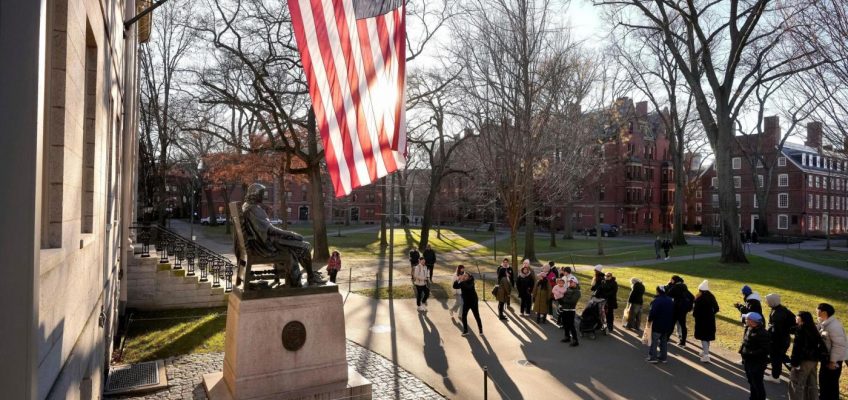A one-time Hudson, Wis., elementary school teacher has admitted to sexual conduct with one of her fifth-grade students last year and faces up to 18 years in prison at sentencing.
Madison Lynn Bergmann (Courtesy of the St. Croix County Sheriff’s Office)
Madison Lynn Bergmann, 25, of Lake Elmo, entered guilty pleas Monday in St. Croix County District County to one count of child enticement with sexual contact and two counts of sexual misconduct by school staff.
The May 2024 criminal complaint accused Bergmann of kissing the 11-year-old boy on the mouth and touching his leg in her classroom at Rivercrest Elementary School.
Several charges were dismissed as part of a plea deal she reached with prosecutors: one count each of first-degree child sexual assault of a child under age 13; use of a computer to commit a child sex crime; exposing a child to harmful descriptions; a third count of child enticement; and three additional counts of sexual conduct by a school staffer.
Bergmann’s $25,000 bond was revoked at the plea hearing and she was taken back into custody for sentencing, which is scheduled for Dec. 22.
Erica Ellenwood, deputy assistant district attorney, said Tuesday the child enticement charge carries up to 15 years of initial confinement and 10 years of extended supervision, while the other two charges each carry up to one and a half years.
Bergmann’s attorney, Joe Tamburino, declined to comment on the case Tuesday.
Bergmann is one of two former Rivercrest teachers facing sex crimes.
In August, Abigail Michelle Faust, 24, of Hudson, was charged in St. Croix County Circuit Court with sexual misconduct by school staff and other charges, alleging she also kissed a fifth-grade boy last year in her classroom at the end of a school day. She’s also accused of failing to report Bergmann’s sexual abuse of her student.
Last month, Faust was charged with various criminal counts in both St. Croix and Washington counties for allegedly sexually assaulting a Washington County 15-year-old boy while working as his family’s nanny.
Faust’s cases are ongoing.
Boy’s dad found text messages
According to the criminal complaint against Bergmann:
The illicit conduct was first discovered in April 2024 through several text messages between Bergmann and the boy. In a letter police then found in the boy’s desk, Bergmann told him, “I love you so much it hurts,” the complaint says.
The boy’s mother discovered Bergmann talking to her son on the phone, then emailed Bergmann, telling her to stop contacting the boy outside of school. The mother took the boy’s phone and gave it to his father, who found the text messages and notified the school.
Several printed screenshots of text messages between the boy and Bergmann were given to police. In one text, Bergmann wrote that she “wanted to just grab your face and push you to the floor and make out with you.” In another text, the teacher told the boy how she “almost kissed you when you were on the ground today but I got distracted by your stomach,” the complaint says.
In an interview Wednesday at the school, Bergmann said she spoke with the boy over the phone four or five times. She said that she had been invited to go snowboarding at Afton Alps with the boy and his family and she exchanged phone numbers with him in case they became separated.
When Bergmann was asked if there had been any text messages exchanged between her and the boy, she requested a lawyer.
Police found in Bergmann’s backpack a folder with the boy’s name on it and several handwritten notes. “In her notes she tells him that she loves him, wants to kiss him, he turns her on, and that she is obsessed with him,” the complaint says.
The boy told police they communicated almost daily.
Related Articles
New Brighton man arrested, charged in fatal shooting in St. Paul’s Frogtown neighborhood
Minnesota man pleads guilty to attempting to join Islamic State group
Charges: Suspected drunk driver fatally struck man in Maplewood, drove 2 hours to work
Former Customs officer from Minnetonka pleads guilty to possessing child pornography
Inver Grove Heights man gets 20 years for ‘coercing and manipulating’ girls to send nude photos
The boy said Bergmann had touched his hand, shin and thigh while he sat next to her desk during independent reading time and that “he did not believe any of the other kids would see it happening,” the complaint says.
The boy then told police Bergmann told him to stay after class and that she approached him and kissed him on the mouth. He said that Bergmann had kissed him several times in the classroom after school or during lunch, according to the complaint.
Bergmann started teaching for the Hudson School District in fall 2022. In an email to parents after her arrest, Superintendent Nick Ouellette called the allegations “gut wrenching” and added, “I want you to know the School District is taking this very seriously.”




